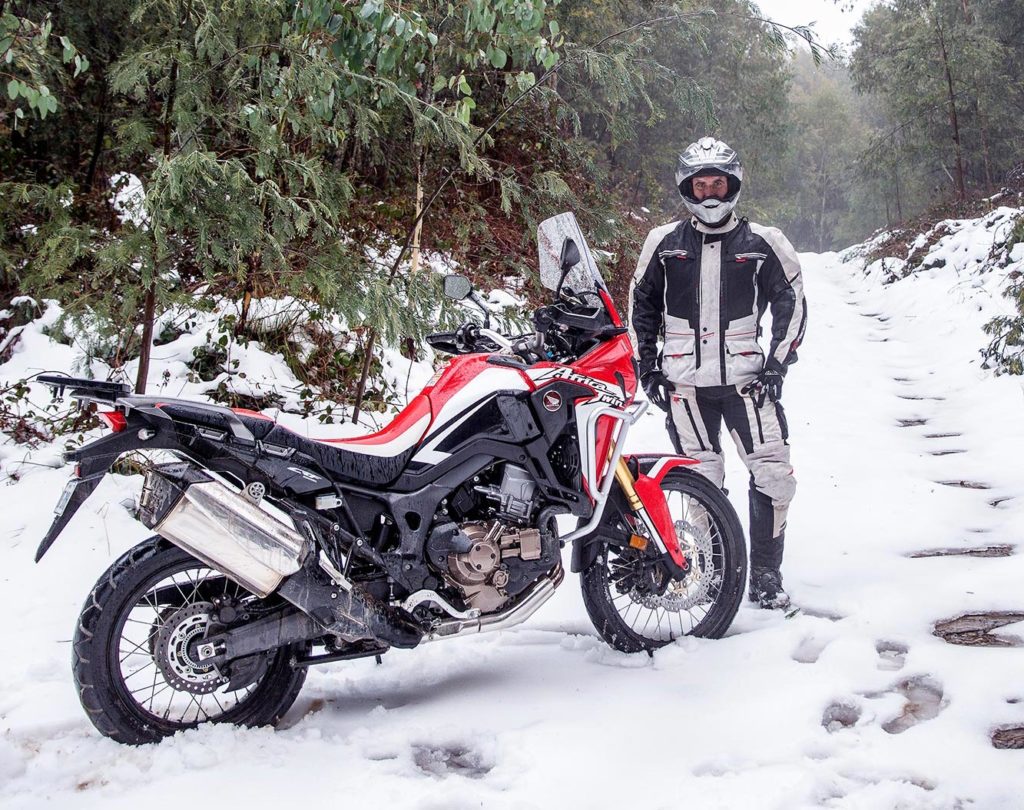Honda CRF1000L Africa Twin Test
Day Two Report Here / Day One Report Here
Riding the Africa Twin | Conclusions
By Trevor Hedge
Day three was the penultimate day of our four-day Africa Twin test traversing New Zealand. The route today took us from Christchurch through to Danseys Pass, where we stayed in a lovely coach style inn high up in the ranges.
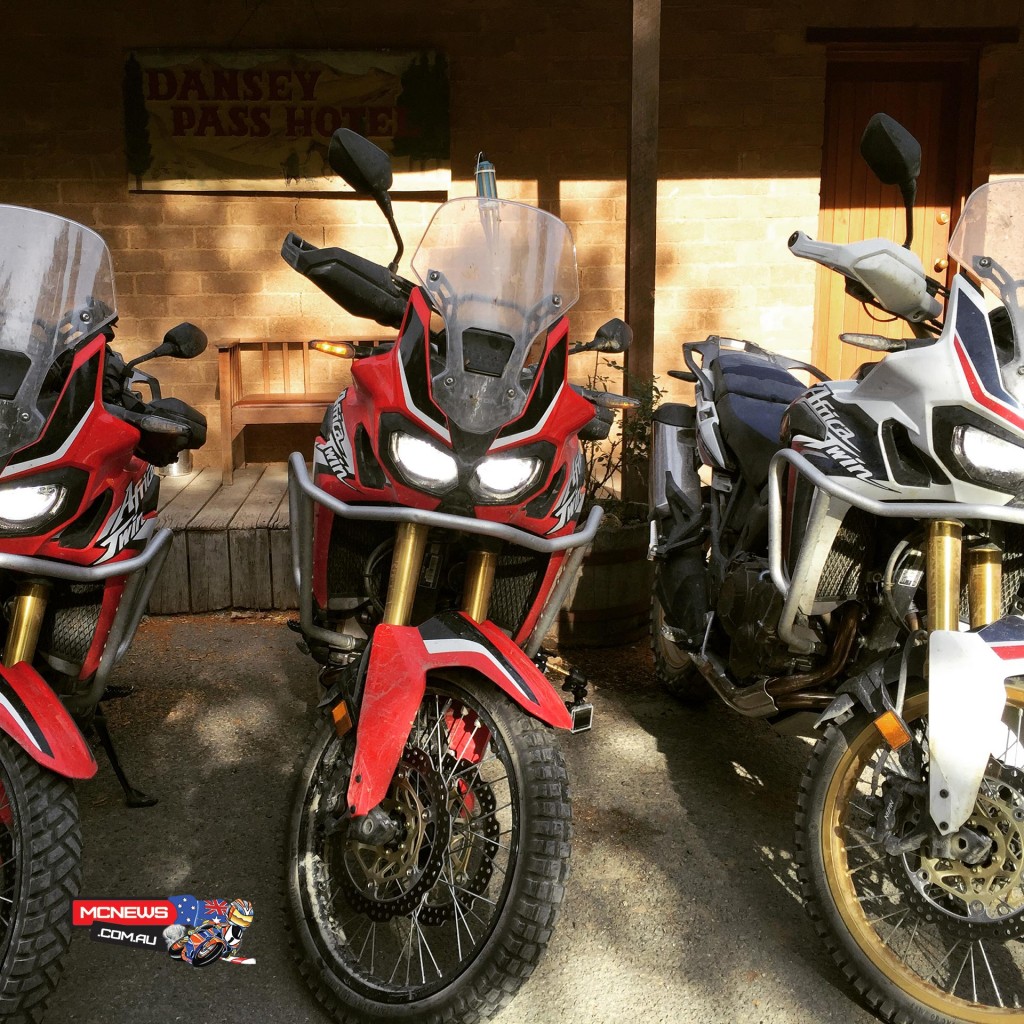
The first half of the 450km section was mainly on tarmac, but the latter half was an enjoyable drifting run on dirt roads.
This third day of the launch I chose a conventional gearbox Africa Twin, shod with TKC80 off-road rubber.
Day Two Report Here / Day One Report Here
After the past two days on a stock tyred DCT bike, complete with full hard luggage outfit, it was a revelation to get on a bike with off-road grip, and without the added impost of luggage.
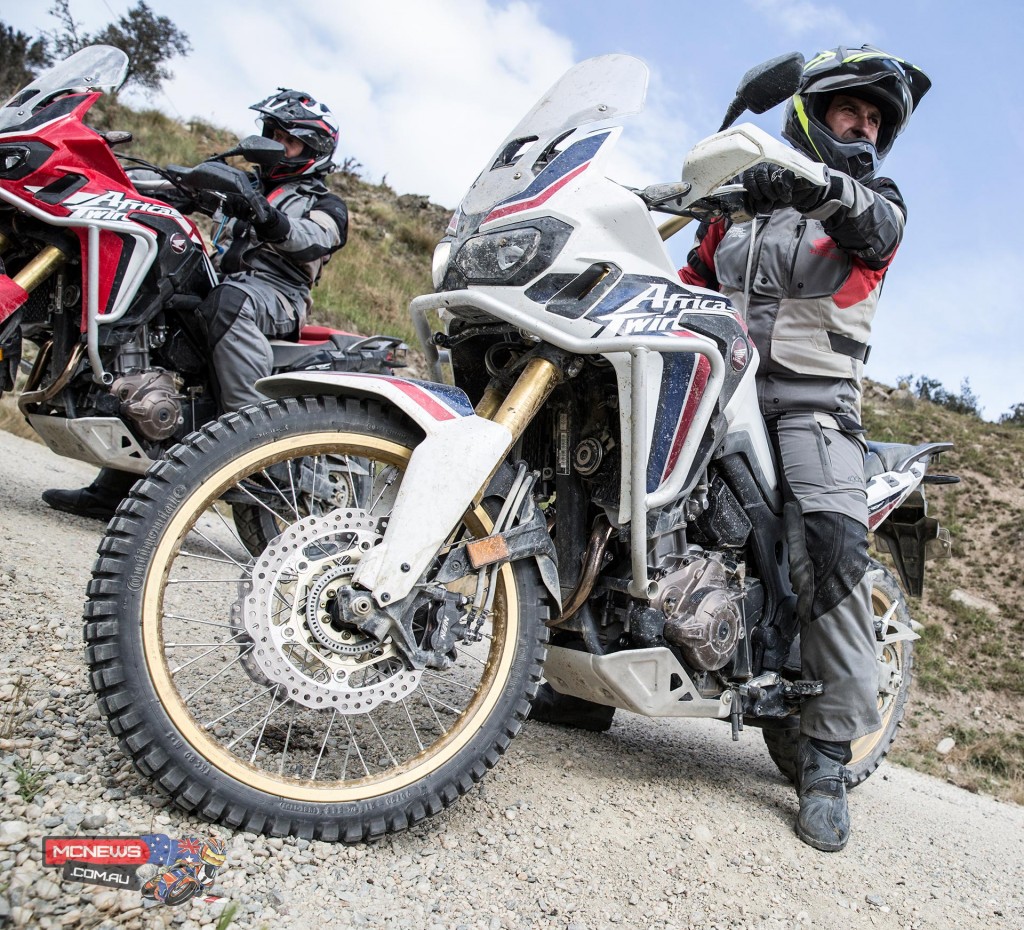
The result was laugh in my helmet moments on the more open dirt roads. Back end of the Africa Twin stepped out sideways long before the corner and power-sliding all the way through long sweepers. The surface offered very little grip but was much more predictable than the previous days which allowed for some pretty loose action.
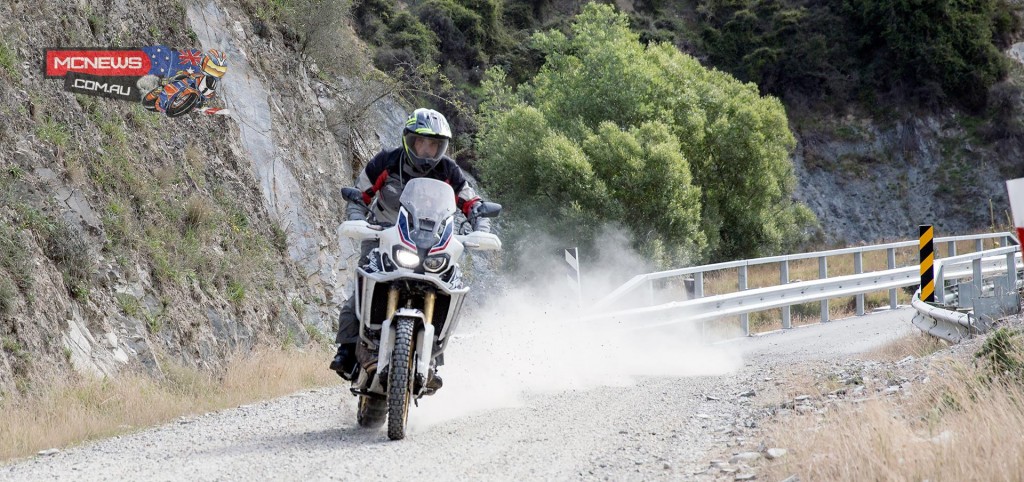
A few runs across a fun river crossing were also included and the DCT machines once again held their heads high. The DCT bikes were also tested up and down some reasonable off-road gradients and again came through the tests well.
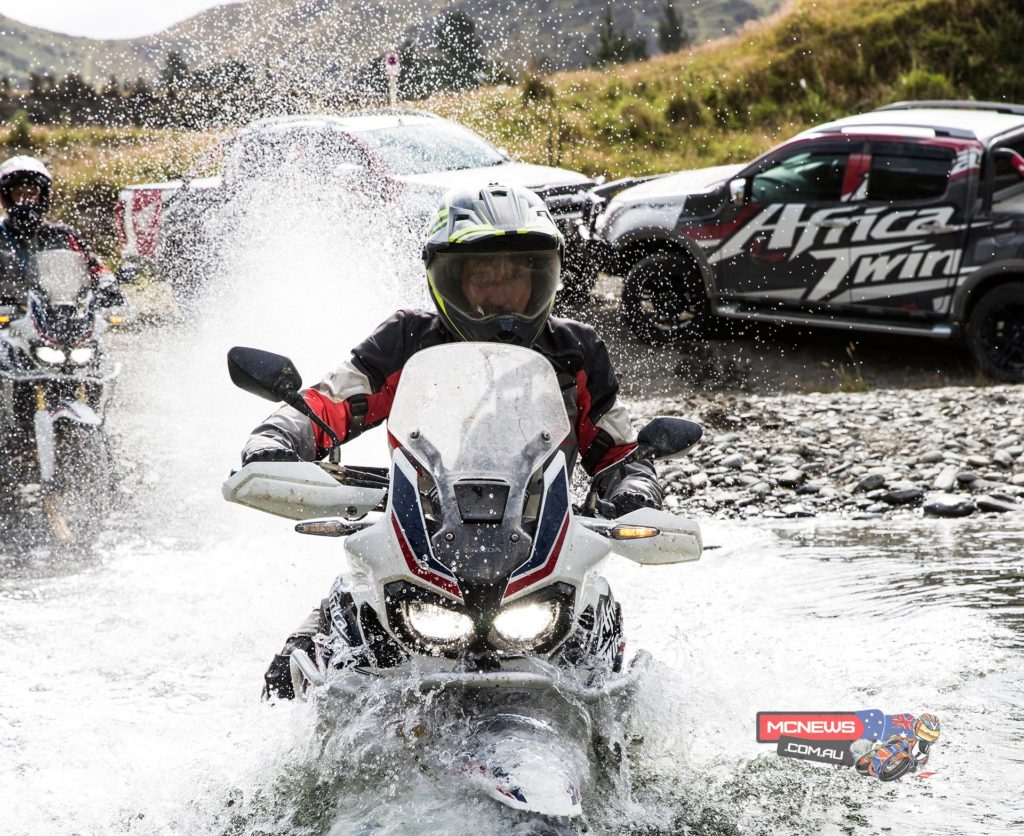
One could say that the DCT machines are somewhat reminiscent of what can be experienced on enduro bikes fitted with Rekluse auto-clutches. These have been gaining popularity amongst the hard enduro experts and weekend warriors, making the machine virtually impossible to stall and working well on both two-stroke and four-stroke off-road machines.
Another modification a lot of serious 250/450 enduro riders are doing to their bikes is to fit a left-hand operated rear brake lever, at the same time as they install the Rekluse clutch. The DCT models of the Africa Twin actually already have this hardware in place as a supplementary caliper is fitted to the DCT bikes to act as a parking brake, which is operated from a brake lever on the left bar. I imagine it would not take too much work to turn this into an operative rear brake lever for use on the fly backing into turns, adding yet more amenity to those that find such things an attractive proposition. I have a fused right ankle so this is something I would probably investigate doing if taking a DCT Africa Twin home for good.
One of the first questions I asked the assembled Honda personnel was ‘what if you have a tumble and bash up the right hand switch block that allows you to put the DCT machine into drive mode?’
Apparently, there is a fail safe in the DCT system that if problems occur it will stay in one gear to allow you to get home. There is also a back-up foot lever available if you want to manually shift with your foot, rather than the paddles on the left switch block. The machine always defaults to neutral in the case of a crash, thus it is feasible that with the foot shifter engaged the DCT system should hopefully never leave an Africa Twin rider stranded on the trail with no means of getting the machine into gear.
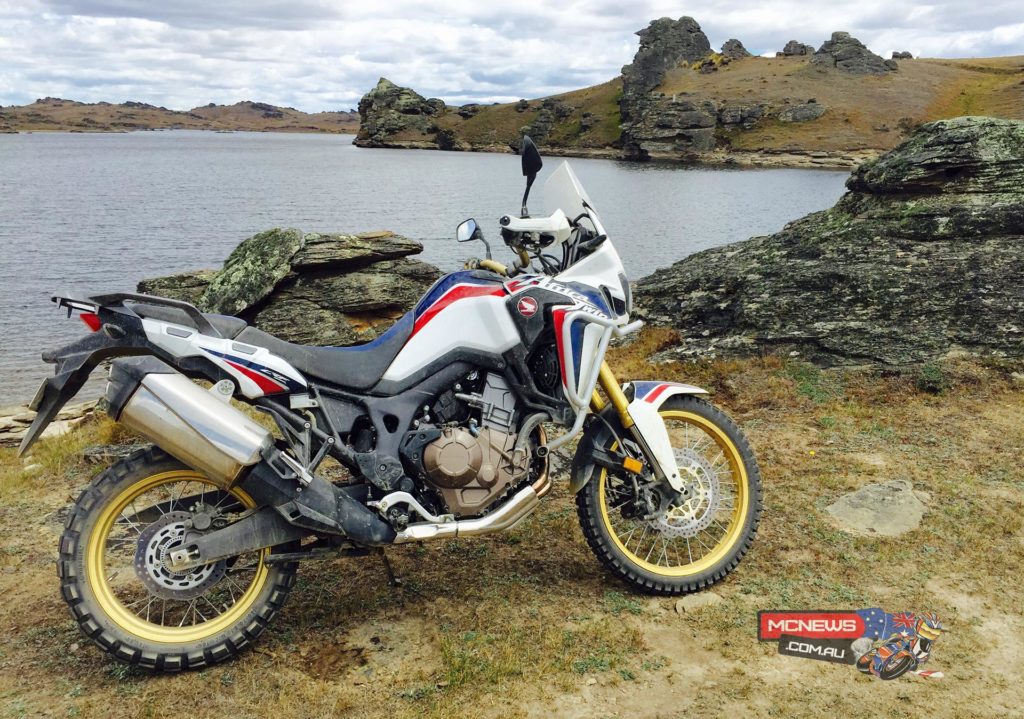
The 998cc parallel twin has a grunty persona, and feels significantly more powerful than its claimed 94hp. Given enough head it can break through the 200km/h barrier.
Maximum power arrives at 7500rpm while the 98Nm of torque peaks 1500rpm earlier. The delivery is very linear, but thankfully does not feel flat.
I have not really enjoyed too many parallel twin engines. In many cases they can be quite devoid of character and don’t really give me all that much enjoyment. I am very, very glad to report that the Africa Twin engine is far from mundane and boring. This was my greatest fear ahead of getting on this bike, I really hoped Honda had not dumbed it down too far in the quest for user friendliness, making the engine about as exciting as a diesel water pump in the process.
Thankfully it does have an enjoyable gait and even sounds pretty good. Even though it is a completely different engine configuration from the long discontinued VTR1000, the Africa Twin does have a similar feel to that very popular v-twin. Not the same, of course, but it is a little similar.
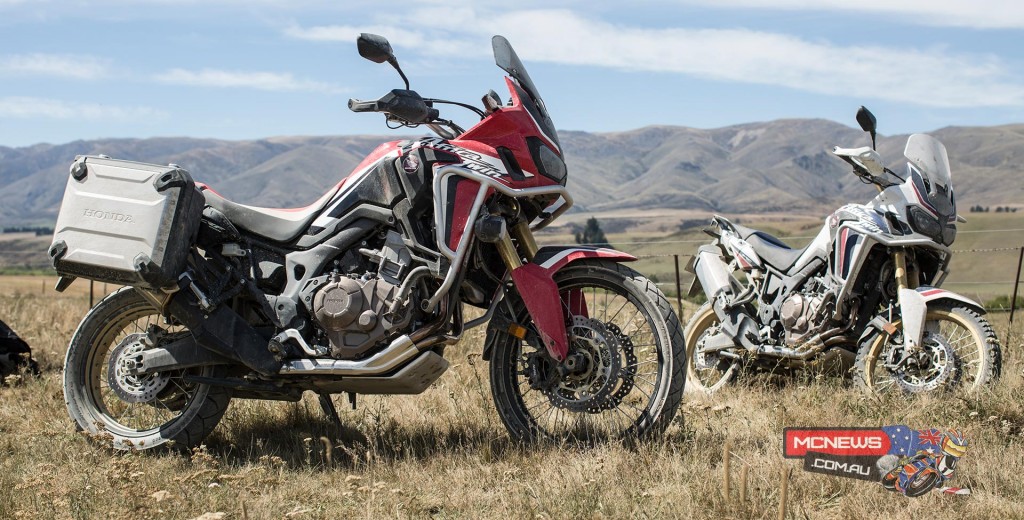
The Africa Twin has significantly more grunt and a more enjoyable character than BMW’s F 800 GS, but is certainly no match for the prodigious output of the latest water-cooled R 1200 GS, which in its latest iteration is a truly superb power-plant.
The Africa Twin is also not quite as grunty as KTM’s downsized 1050 Adventure, and as such is of course not remotely comparable to the hedonistic 150 pony firepower of the 1190 Adventure. The 1050 KTM though has less capable suspension than its bigger sibling, and the brakes are not quite as good as found on the 1190 either. As such, the Africa Twin has a better suspension and braking package than the 1050, and the chassis is at least as good as the 1190, perhaps even a little better.
The Africa Twin doesn’t have the rev-happy, kid with A.D.D. style character of Triumph’s 800cc triple but the Honda is less tiresome as a result, making it easier to put the power down to the ground. The claimed maximum power of the Triumph is about the same, but Honda claim a lot more torque, as you would expect from 200cc more and one less cylinder, and this certainly feels the case in the real world. The Honda is also much smoother and again, I think the suspension and braking package better than the Triumph, significantly better than the base model Tiger for sure, but also marginally better than the Tiger XC. While the Honda engine is much more fun than I had expected, and does certainly have a lot more torquey grunt than the Tiger 800, the Brit triple-cylinder engine certainly does offer a lot of character and zip.
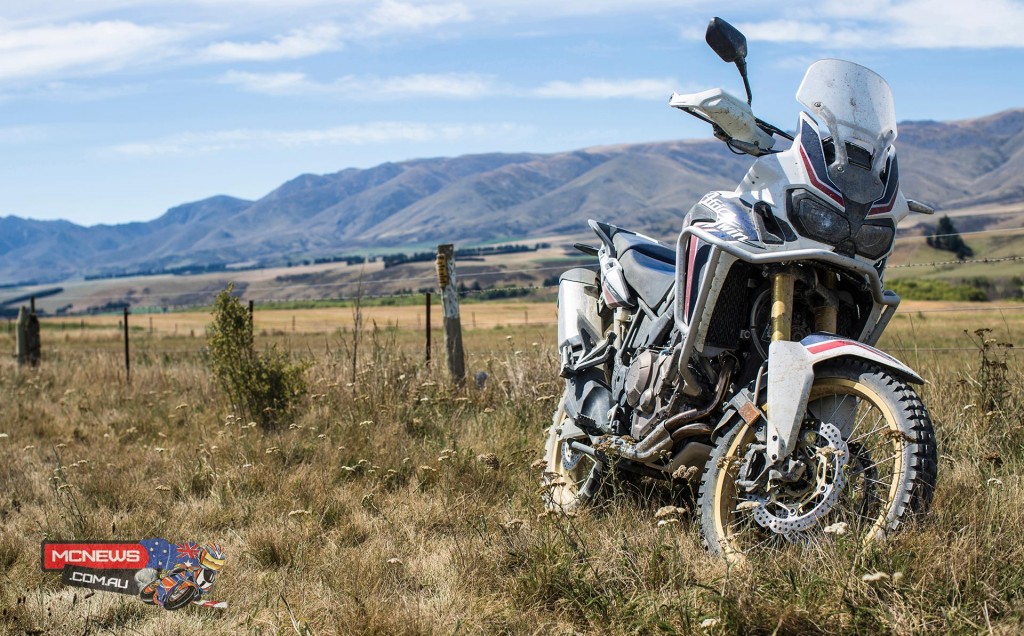
Incorporating the incredibly compact Unicam cylinder head design from Honda’s highly successful CRF450R and CRF250R motocross machines, the Africa Twin engine has lots of smart design elements aimed at keeping the power-plant as compact as possible. The cast camshaft is located in a similar fashion to that seen on the Fireblade and operates 36.5mm intake valves and 31mm exhaust valves.
A pair of spark plugs fire each cylinder, so four plugs in all, across a phased firing order while resin coated 92mm pistons slide through a 75.1mm stroke.
The Africa Twin engine also sports a semi-dry sump design which, in-part, has helped Honda to give the Africa Twin an outstanding 250mm of ground clearance, while still managing to retain a reasonable seat height of either 850 or 870mm on the adjustable standard seat, or lower again with the optional low seat. The machine is very slim between the knees which makes the seat height more manageable.
A 270-degree crankshaft helps with the character while balance shafts help to keep things smooth while pulling double duty in driving the ancillaries. A parallel twin is also, by design, naturally much more amenable to exhaust and induction routing than a v-twin engine. It means that no rear header needs to be routed near the shock and under your loins, meaning that both the shock, and the rider, remain more comfortable.
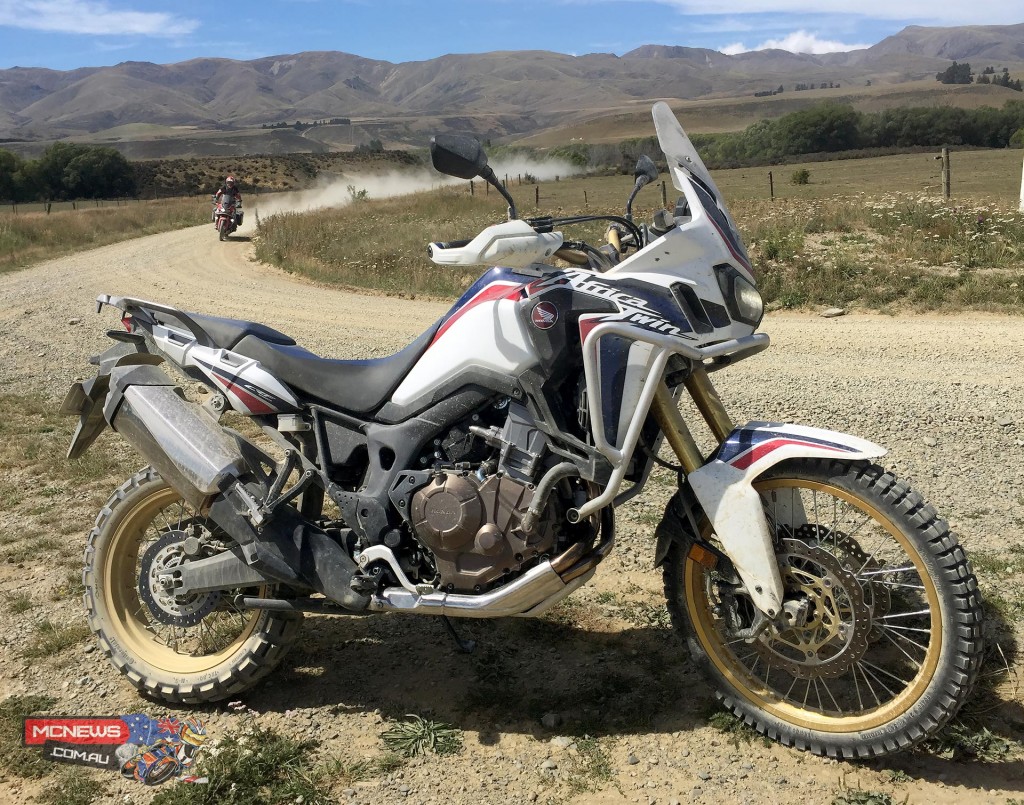
I really have to give Honda some credit for their suspension work on the Africa Twin. I haven’t had that many nice things to say about the quality of the rear shocks fitted to some of their non-sportsbike machinery in recent years.
The Showa shock suspending the Africa Twin through a 220mm stroke is fully-adjustable and even visually looks like a serious unit, a 46mm cylinder is flanked by an impressively sized remote reservoir. We gave the bikes a pretty hard time in some fairly hot conditions and the shock never seemed to run out of damping control. That suggests the Africa Twin might still perform quite well two-up with luggage. Preload is set by a handwheel while rebound and compression is set by screwdriver.
Up front 45mm Showa cartridge forks also proved excellent. With 230mm of travel and a leading axle design the whole mass centralisation ethos has continued right through to the forks and the quite handsomely finished yokes.
Despite the very reasonable $15,499 price of entry, for a base machine with no DCT/ABS or Traction control, it is extremely pleasing to see that Honda does not seem to have cut corners in regards to the suspension and braking package on the Africa Twin. I hope this is a sign of more promising things to come from Big Red.
On our final day we traversed some of the highest public roads in New Zealand before winding our way down to Queenstown, where we completed our 1300km epic on Honda’s new adventure machine. Meanwhile, check out our day one report, and day two report if you have not perused them before coming through to this third and final instalment.
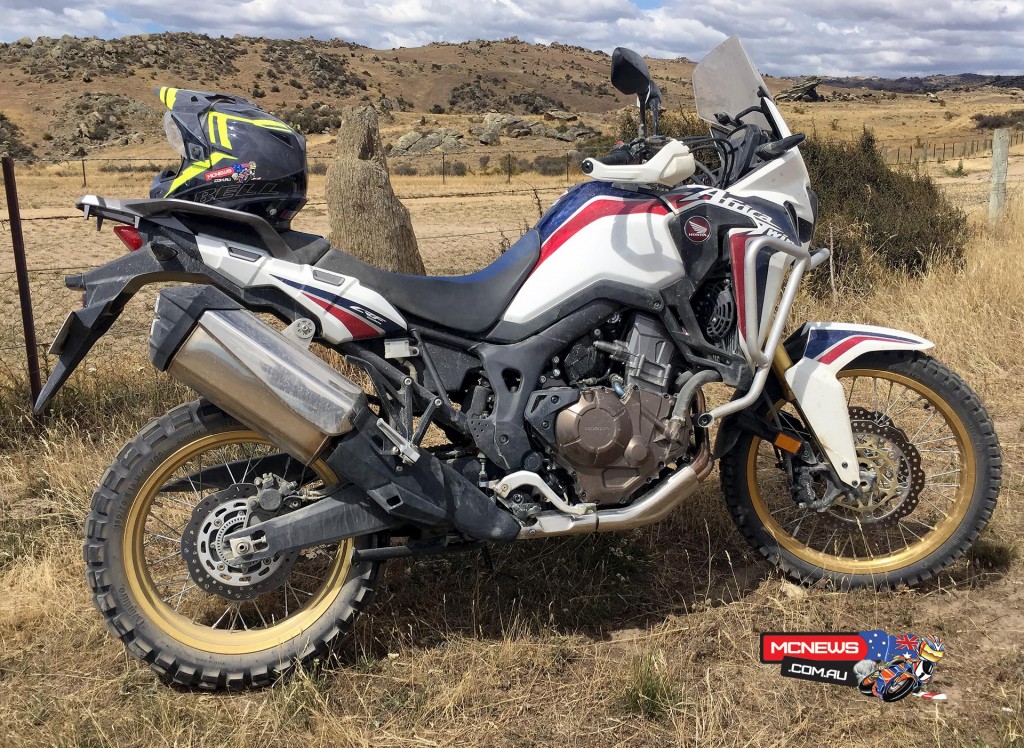
Months later back in Australia we took an Africa Twin into the mountains and onto some of my favourite stretched of blacktop in the Victorian High Country. It did not disappoint.
I still have my doubts about the long-term ownership viability of DCT gearboxes, as I mentioned in some of my earlier musings on the subject, particularly on my lengthy day one entry on the bike. The record for this technology in the automotive world is far from exemplary. Thus as much as I do like the DCT system, and there is no doubt that for riders in poor shape or suffering various ailments, such as arthritis in the hands or other mobility problems DCT will be an absolute godsend, personally, I would still go the traditional route, and save myself a fair bit of coin in the process.
The Africa Twin is a lot of bang for the buck and is a true adventure bike with excellent off-road ability. It gives away a fair bit in the power stakes to the larger engined adventure machines on the market, but would still be not too far behind on any sinuous stretch of blacktop. And with a base entry price of $15,499 the Africa Twin is certainly the most affordable big-bore true adventure machine on the market. For off-road ability it is right up there, second only to the KTM 1190 Adventure R while being as handy off-road as an R 1200 GS.
